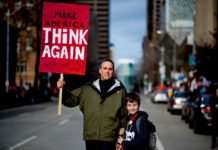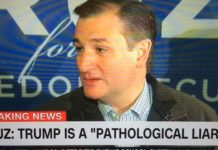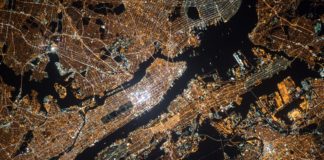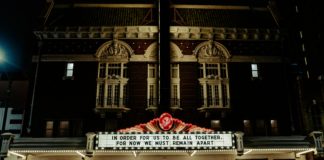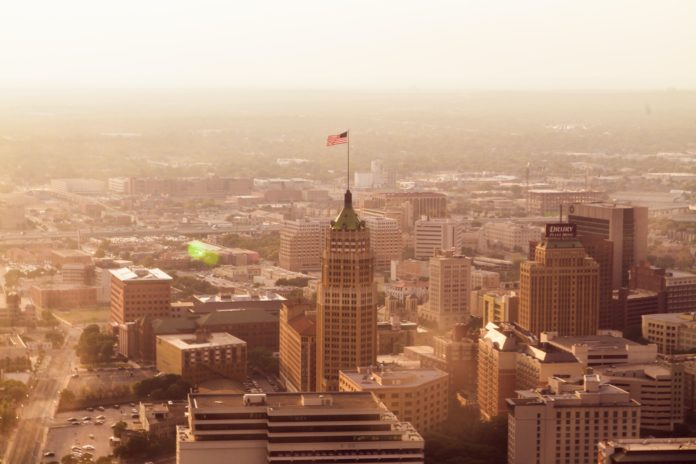
Photo: Chandra Maharzan via Unplash
Though much of our idealist art, iconography, and symbolism paints the American story as a tale of rustic pastoralism and life on the frontier, the truth is that the rise and blossoming of the American city is just as, if not more, important to understanding our history and our character.
From the essential roles played by New York City and Philadelphia in the American Revolution and the founding of the United States, to the critical function of Union cities and their manufacturing might ensuring victory for the North in the Civil War. And from the rapid expansion of the U.S. population at the end of the 19th century centered on industrializing cities, to the ongoing struggle for racial equality, playing out in our urban areas, our story is often a city story.
Today, around 83 percent of all Americans call an urban area home. By 2050, that number could increase to as high as 89 percent meaning that nearly nine out of every 10 Americans will be living in a city by the halfway mark of the 21st century. We continue to urbanize, and the greatest of all American offerings – opportunity – continues to be found within our cities.
In Texas, America’s continued pace of urbanization is even more pronounced. Within the state’s borders, as many as seven of the 15 fastest growing urban areas can be found. The “Texas Triangle” – with Dallas-Fort Worth at the northern corner, Houston on the southeast corner, and San Antonio on the southwestern corner, and containing Austin in the middle – is expected to balloon to a population as high as 20 million by 2030, a larger population than that of the New York City metropolitan area. As with the rest of the United States, the future of Texas is the city.
Yet throughout the summer, cities have been scapegoated and rhetorically described as hotbeds of crime, civic incompetence, and most recently anarchism, by President Donald Trump, his allies, and various state leaders including Texas Gov. Greg Abbott. It should be mentioned that such threats of force and denigrating remarks have not been made upon cities with Republican mayors, such as Jacksonville, Tulsa, and Fort Worth, all of which have seen similar spikes in crime and unrest as in cities run by Democrats.
And of course, this devious language is deliberately used to divide Americans along arbitrary lines — urban, suburban, rural — and manipulate us to believe one another are the source of our problems. Just to name a few of the real culprits: the COVID-19 pandemic, racial injustice, largely unchecked mental health and substance abuse disorders, and the changing climate. We must face these challenges together, with leadership that encourages us to unite on what we have in common, not divide us based on where we live.
Trump, despite being our head of state, and beholden to serve the interests of and protect all Americans, has repeatedly mocked and derided our cities, including a retweeting call from a supporter to “Leave Democrat cities. Let them rot.”
Except, there is no such thing as a Democrat city. There is no such thing as a Republican city. There are only American cities. And though it not might seem so lately amid our hyper-partisan political discourse, the fates of urban and rural America are thoroughly intertwined and inseparable.
As the COVID-19 pandemic consumed this country, in many ways letting our cities rot is exactly what Trump did as he declared that it is not his, nor the federal government’s responsibility to rescue cities and states hit hardest by the pandemic. Conveniently, these are cities and states run by those that Trump considers to be his political adversaries, and thus undeserving of assistance from the federal government.
In Trump’s words, tweeted on April 27th shortly after American daily deaths were peaking:
“Why should the people and taxpayers of America be bailing out poorly run states (like Illinois, as example) and cities, in all cases Democrat run and managed, when most of the other states are not looking for bailout help? I am open to discussing anything, but just asking?”
As our cities were gripped by widespread protests following the murders of George Floyd in Minneapolis and Breonna Taylor in Louisville, Trump has taken the converse, but equally destructive approach.
Encroaching upon the legal purview of urban governments by deploying potentially extra-legal and military-clad federal agents to violently quell demonstrators under the chilling “Operation Legend” moniker, to the dismay of local officials, and horror of urban Americans everywhere.
Trump, upon his visit to wounded Kenosha, Wisc., did not mince words on who is at fault:
“Obviously, that’s been a disaster, Chicago, total disaster, with again, radical left Democrat, and we just have to… It’s all Democrat, everything’s Democrat. All of these problems are Democrat cities. We don’t want to say it, but it is. The top 10 are Democrat. Then you go into the top 25, and take a look at that. It’s the same thing…These are not acts of peaceful protest, but really domestic terror. My administration coordinated with the state and local authorities to very, very swiftly deploy the National Guard surge federal law enforcement to Kenosha and stop the violence. And I strongly support the use of the National Guard in other cities. And the same thing would be happening if we did that. You’d have the same thing happened in Portland.”
Tim Keller, Mayor of Albuquerque, another city where Trump deployed federal agents, though less publicized, rebuked the actions in a statement:
“We always welcome partnerships in constitutional crime fighting that are in step with our community, but we won’t sell out our city for a bait-and-switch excuse to send secret police to Albuquerque… Operation Legend is not real crime fighting; it’s politics standing in the way of police work and makes us less safe.”
For Trump, these actions and statements are motivated by his political interests, as he seeks to demonstrate to his base that he is a “law and order” president. All of the country’s problems, especially his failures, are the result of “anarchists”, a plague upon this country that only he can personally ameliorate. Trump’s anti-city political strategy has two components. First, using the old adage of “cracking down on urban crime”, he enables a more open continuation of racist policies of the past that are politically appealing to large swaths of his voter base. Second, this strategy constructs the ultimate scapegoat for American problems – the “Democrat City” – on which he can launch his continuous attacks, with both zealous rhetoric and brutish force.
He has little desire to carry out his duty to protect the American people, and his motives are laid bare by his subsequent efforts to cut funding to cities he considers to be lawless, and punish others for attempts at meaningful police reform.
Gov. Greg Abbott, has echoed Trump’s tactics, as he attempts to dismantle efforts in Austin to reform law enforcement and remove the horrific legacy of Jim Crow.
Finally, it is important to remember, American cities are not city-states. As Michigan State University political scientist Joshua Sapotichne explained to the New York Times, “The assumption is that [American] cities are city-states… what that means is that they have the autonomy to act on the preferences of their constituents. And that’s not even true with respect to social distancing, mask mandates and lockdowns on the COVID side.”
Our cities cannot survive on their own and meet the many immense challenges of our country’s future without productive relationships with their state governments, and certainly cannot tolerate a continuation of adversarial discord with the federal government.
When our cities needed leadership and competent, organized interventions from the federal government, Trump failed to deliver, even though he personally knew how devastating the COVID-19 pandemic would be. When our cities were gripped by protests and violent, sectarian clashes, Trump over-reached and escalated the violence. Instead of calling for unity and collaboration to correct injustice, he points fingers and obfuscates.
Whoever wins the Presidency in November, whether we welcome a new administration under Joe Biden, or Donald Trump wins another four years, our American cities deserve to be treated as what they are – the home to over eight in 10 Americans, the setting upon which we can finally begin to remedy the social and racial injustice from our history, and the cradle of our future.
If you like what you’ve been reading, please click here to subscribe and we will send you updates and our newsletter.

